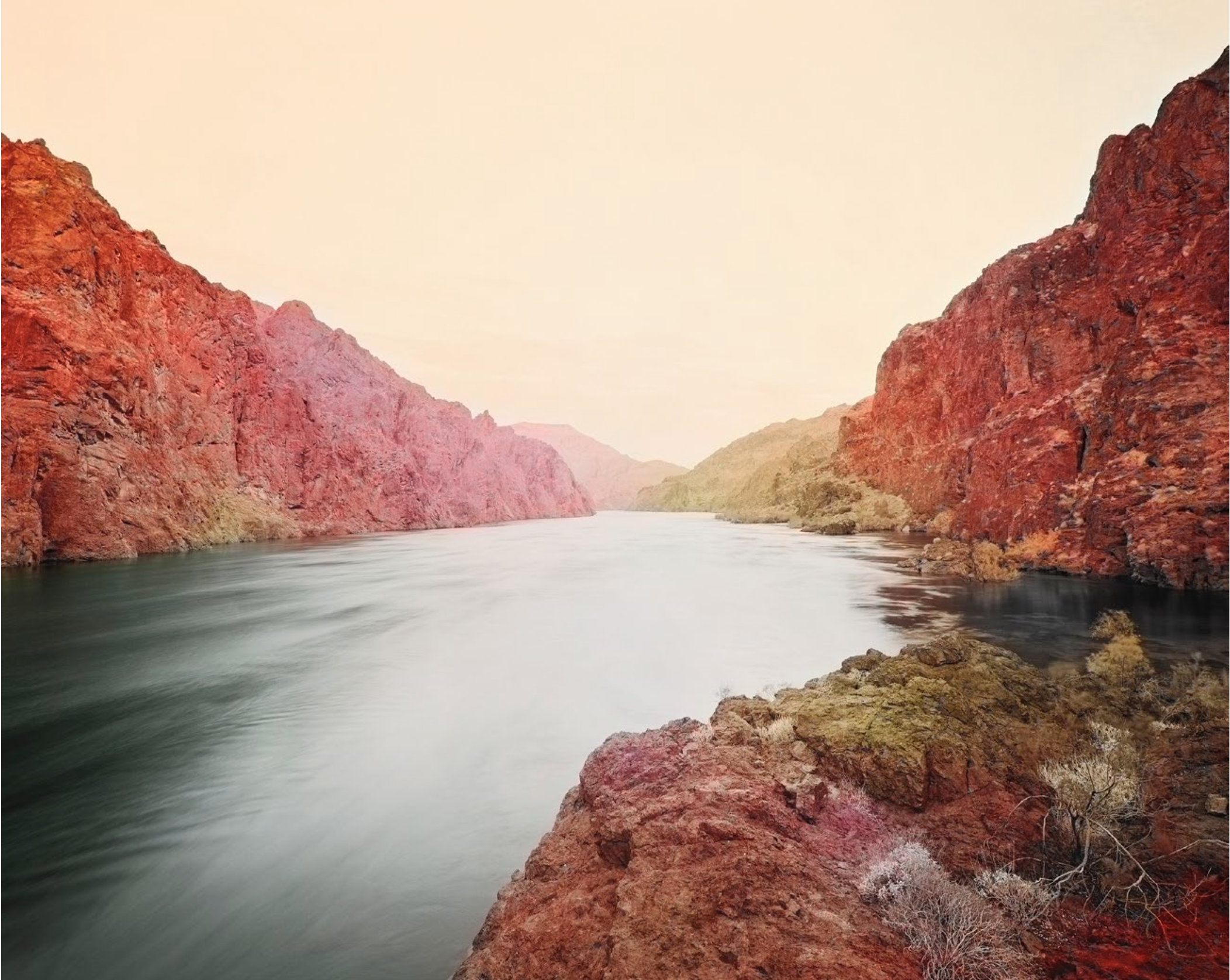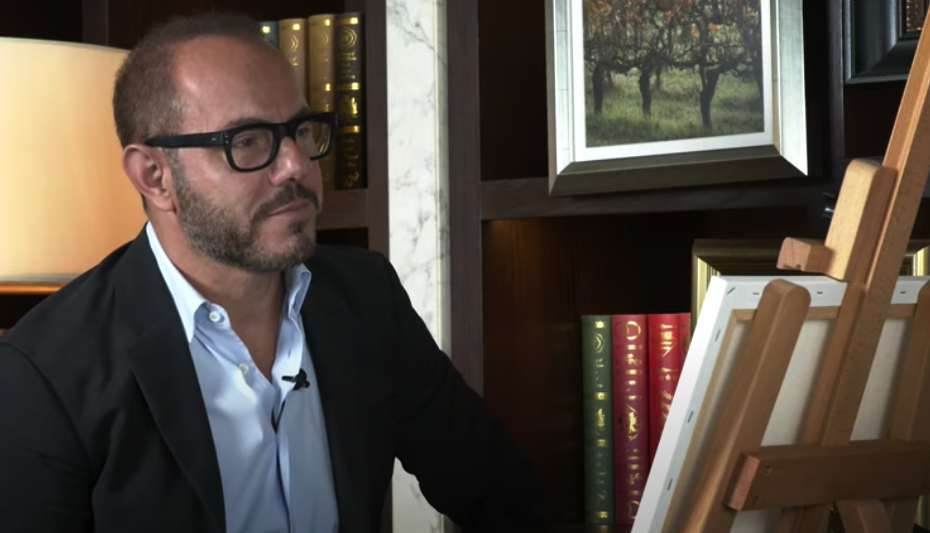Behold These Glorious Times!
2017 - Film & Video (Film & Video)
10:02 minutes
Trevor Paglen
Trevor Paglen’s ongoing research focuses on artificial intelligence and machine vision, i.e. how computers and other forms of technology can “see” and use visual data. Behold These Glorious Times! brings together hundreds of thousands of images and flashes them on the screen with dizzying, yet hypnotic, rapidity over the course of twelve minutes. As we learn, these photographic images are taken from training libraries used to teach artificial intelligence networks to recognize objects, faces, expressions, and actions in order to automate human emotions and expressions. Further, as the video progresses, the images begin to break down into more and more basic forms: black and white grids, subtle arrays of shading. In order to recognize images, AI is taught to break apart each picture, analyze its most basic parts, and then make sense of the whole. This alternatively numbing and captivating process is accompanied by an operatic soundtrack (composed by electronic musician Holly Herndon) which, itself, is a product of algorithms: the sounds are pulled from an auditory training library that will teach machines how to recognize human speech. As Paglen explains, when artificial intelligence is being taught how to see, it is fed batches of thousands of images that are sorted into various groupings known as “training sets.” This is what humans look like (note: African-Americans have been mistaken for gorillas); this is what doctors and nurses look like (note: computers readily conclude that doctors are always male and nurses always female based on the data they’re given); this is what a woman wearing a burqa looks like (note: apparently humans can get this wrong as well, so who knows). While there is already enormous bias in the images that we see around the world, we, as humans, have the capacity to critique our own views and try to expand our own “training sets” to challenge our visual stereotypes. While AI itself will not have the same capacity for self-reflection, the real question is whether its programmers and creators will make room for these debates. Power increasingly belongs to those who control this digital output Paglen calls “invisible images.” The basic challenges faced by AI vision will have wide-reaching consequences.
Trevor Paglen’s work combines the knowledge-base of artist, geographer and activist. He is primarily concerned with “learning how to see the historical moment we live in and developing the means to imagine alternative futures.” Through unique processes like long distance photography, and conducting research like an investigative journalist, Paglen has presented artworks that live at the very edge of the known and the possible, in the zone of facts-stranger-than-fiction. He’s contributed research and cinematography to the Academy Award-winning film Citizenfour , and created a radioactive public sculpture for the exclusion zone in Fukushima, Japan. He is the author of five books and numerous articles on subjects ranging from experimental geography to military symbology, from the CIA’s extraordinary rendition program to machine-made images.
Colors:
Related works of genres: » artists from the san francisco bay area, » american conceptual artists
» see more

© » KADIST
Amy Balkin
2012Data mining is a computer software process that can involve the neutral or benign analyzing of internet data for patterns, however, it can also imply the more sinister activities of surveillance or subject-based information gathering...

© » KADIST
Ari Marcopoulos
1998A photograph of a tin box full of marijuana simply titled Green Box, speaks to the constantly changing status of the substance–once taboo or illicit, now a symbol of a growing industry in Northern California...

© » KADIST
Sergio De La Torre
2011This is not in Spanish looks at the ways in which the Chinese population in Mexico navigates the daily marginalization they encounter there...

© » KADIST
Felipe Dulzaides
2006I Am Cuba— “Soy Cuba” in Spanish; “Ya Kuba” in Russian—is a Soviet/Cuban film produced in 1964 by director Mikhail Kalatozov at Mosfilm...
Other related works, blended automatically
» see more

© » KADIST
Trevor Paglen
2020Half Dome Hough Transform by Trevor Paglen merges traditional American landscape photography (sometimes referred as ‘frontier photography’ for sites located in the American West) with artificial intelligence and other technological advances such as computer vision...
Related works sharing similar palette
» see more

© » KADIST
Chemi Rosado-Seijo
2016Map of the Universe from El Cerro continues Chemi Rosado-Seijo’s long-term engagement with the community of El Cerro , a rural, working-class community living in the mountains of Naranjito, Puerto Rico...

© » KADIST
Minia Biabiany
2020Musa is a visual and textual work by Minia Biabiany and the starting point of a broader research around the sexuality of Caribbean women, the historical legacy of slavery, and the artist’s own female lineage...
Other works by: » Trevor Paglen
» see more

© » KADIST
Trevor Paglen
2020Half Dome Hough Transform by Trevor Paglen merges traditional American landscape photography (sometimes referred as ‘frontier photography’ for sites located in the American West) with artificial intelligence and other technological advances such as computer vision...

© » KADIST
Trevor Paglen
2020The Black Canyon Deep Semantic Image Segments by Trevor Paglen merges traditional American landscape photography (sometimes referred as ‘frontier photography’ for sites located in the American West) with artificial intelligence and other technological advances such as computer vision...
Related artist(s) to: Trevor Paglen » Anton Vidokle, » Raqs Media Collective, » Amy Franceschini, » Ann Veronica Janssens, » Carlos Motta, » Eyal Weizman, » Hasan Elahi, » Kota Ezawa, » Laura Poitras, » Taryn Simon
» see more

© » KADIST
Anton Vidokle
2020Shot in Oliveto Lucano, a village in the south of Italy, AUTOTROFIA (meaning self-eating) by artist Anton Vidokle is a cinéma vérité style film that slides fictive characters into real situations, and vice-versa, to draw a prolonged meditation on the cycle of life, seasonal renewal, and ecological awareness...

© » KADIST
Kota Ezawa
2017The Crime of Art is an animation by Kota Ezawa that appropriates scenes from various popular Hollywood films featuring the theft of artworks: a Monet painting in The Thomas Crown Affair (1999), a Rembrandt in Entrapment (1999), a Cellini in How to Steal a Million (1966), and an emerald encrusted dagger in Topkapi (1964)...

© » KADIST
Kota Ezawa
2014Paint and Unpaint is an animation by Kota Ezawa based on a scene from a popular 1951 film by Hans Namuth featuring Jackson Pollock...

© » KADIST
Kota Ezawa
2002The Simpson Verdict is a three-minute animation by Kota Ezawa that portrays the reading of the verdict during the OJ Simpson trial, known as the “most publicized” criminal trial in history...
Related works found in the same semantic group
» see more

© » KADIST
William E. Jones
2000His series, The Golden State, harkens back to his early career and his photographic training...

© » WALLPAPER*
Ikea Dajlien collections marks the company's wellness debut | Wallpaper The Ikea Dajlien collection, mixing wellness and training equipment with a domestic-led approach (Image credit: Courtesy Ikea) By Maria Sobrino published 11 December 2023 If you think Ikea has conquered every facet of our lives, think twice - think home training as well...

© » KADIST
Jackie Karuti
2017The Planets, Chapter 32 (2017) is a short video that depicts the world at a time of great anxiety...




